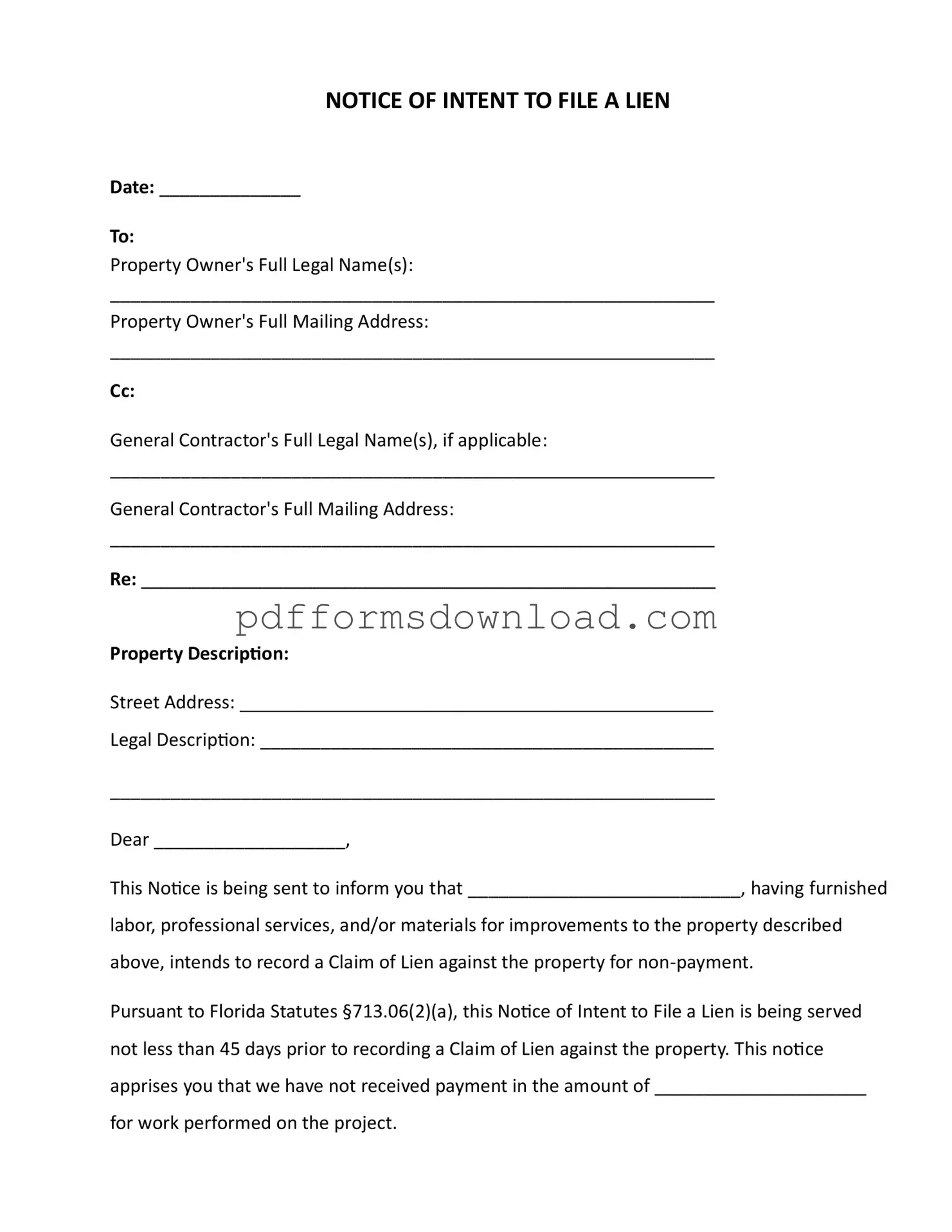Download Intent To Lien Florida Template
The Intent to Lien Florida form serves as a formal notification to property owners regarding the intention to file a lien due to non-payment for services or materials provided. This document is essential for contractors and suppliers, as it outlines the necessary steps to protect their rights under Florida law. Prompt attention to this notice is crucial to avoid potential legal consequences, including foreclosure proceedings.
To fill out the form, please click the button below.
Make This Document Now
